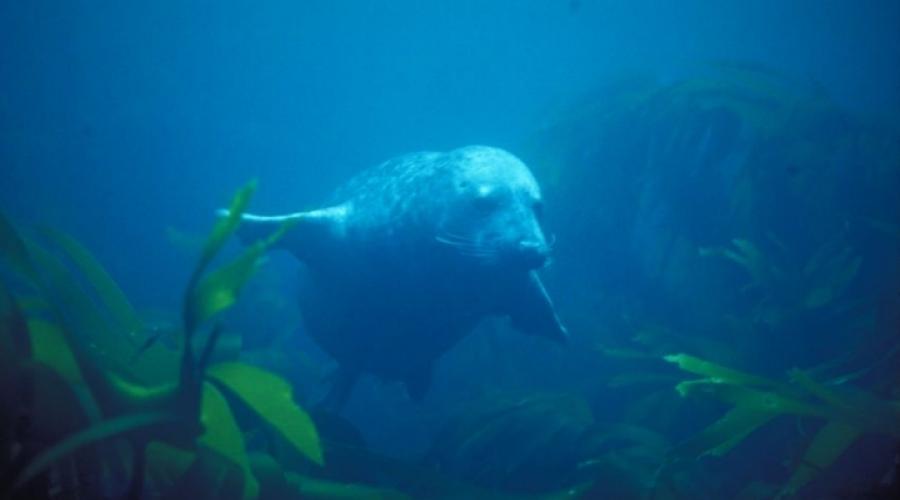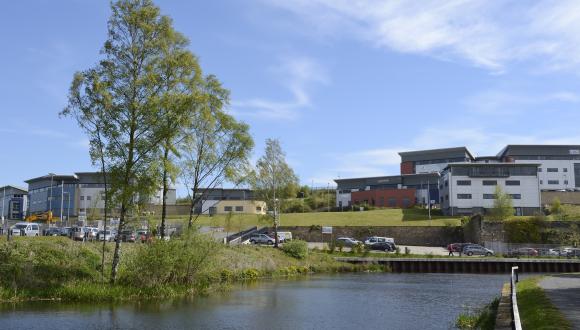
Advice on marine renewables development
We will work with developers to find solutions that enable development and avoid natural heritage impacts.
Developers should assess the proposed site of any offshore development for impacts on:
- marine species – such as mammals, seabirds and fish
- marine habitats
- coastal landscapes
Guidance for developers
Our Marine Energy Team handles all of the marine energy work we’re involved in. This includes offshore wind, wave, tidal stream and tidal barrage development proposals. As of April 2017, we also deal with development proposals beyond 12 nautical miles (previously handled by the Joint Nature Conservation Committee).
Our Planning Service Statement guides our involvement in marine energy casework.
We support an early approach to engagement with both developers and Marine Scotland.
Our guidance has been developed either within NatureScot or with Marine Scotland and/or the UK’s other country nature conservation agencies. Our guidance covers a range of topics, including Environmental Impact Assessment and Habitats Regulations Appraisal for proposed schemes
For guidance on specific topic areas, please refer to the guidance below.
General guidance
- A Handbook on Environmental Impact Assessment
- Habitats Regulations Appraisal
- Management of Natura sites
- Recommendations for the presentation and content of interim marine bird, mammal and basking shark survey reports for marine renewable energy developments (2014)
- Guidance on Survey and Monitoring in Relation to Marine Renewables Deployments in Scotland (2011) – we still welcome input to this draft guidance
- Review of underwater video data collected around operating tidal stream turbines. NatureScot Research Report: 1225. (2020). This document provides guidance and protocols for the use of underwater video imagery in tidal stream turbine monitoring.
Birds guidance
In February 2020, we held a workshop to discuss guidance needs for ornithological impact assessment:
As a result of this workshop we have now developed a suite of eleven guidance notes highlighting the steps to take, processes to follow and tools / methods to use and where to find these when carrying out an impact assessment for ornithology for an offshore wind farm. Note many of these notes will also be relevant to other types of marine developments.
This series of eleven guidance documents provides a core resource to inform offshore wind development proposals in Scotland. These guidance notes will take stakeholders and developers through each step of the Environmental Impact Assessment (EIA) and Habitats Regulations Appraisal (HRA) processes to guide provision of the supporting information required to inform and support an application.
We have reflected on the previous information contained in applications, held workshops with industry and reviewed research project outputs and post consent monitoring results. These have all helped improve our understanding of interactions between marine birds and offshore wind energy developments. As our knowledge and evidence base continues to grow, we will continue to review and update these guidance notes.
We also provide an update log to these guidance documents, which will highlight when a new version has been published to account for new evidence, and specifically, what changes have been made.
Please note this guidance was written prior to the development of a NatureScot position on how to account for the ongoing Highly Pathogenic Avian Influenza (HPAI) mortality event within an impact assessment. We are currently developing this advice and will provide updates and guidance as they become available. In the interim please contact [email protected] should you have any specific queries.
Guidance Notes
- Guidance Note 1: Guidance to support Offshore Wind Applications: Marine Ornithology - Overview
- Guidance Note 2: Guidance to support Offshore Wind Applications: Advice for Marine Ornithology Baseline Characterisation Surveys and Reporting
- Guidance Note 3: Guidance to support Offshore Wind applications: Marine Birds - Identifying theoretical connectivity with breeding site Special Protection Areas using breeding season foraging ranges
- Guidance Note 4: Guidance to Support Offshore Wind Applications: Ornithology - Determining Connectivity of Marine Birds with Marine Special Protection Areas and Breeding Seabirds from Colony SPAs in the Non-Breeding Season
- Guidance Note 5 : Guidance to support Offshore Wind Applications: Recommendations for marine bird population estimates
- Guidance Note 6: Guidance to support Offshore Wind Applications - Marine Ornithology Impact Pathways for Offshore Wind Developments
- Guidance Note 7: Guidance to support Offshore Wind Applications: Marine Ornithology - Advice for assessing collision risk of marine birds
- Guidance Note 8: Guidance to support Offshore Wind applications: Marine Ornithology Advice for assessing the distributional responses, displacement and barrier effects of Marine birds
- Guidance Note 9: Guidance to support Offshore Wind applications: Marine Ornithology Advice for Seasonal Definitions for Birds in the Scottish Marine Environment
- Guidance Note 10: Guidance to support Offshore Wind applications: Marine Ornithology Advice for apportioning impacts to breeding colonies
- Guidance Note 11: Guidance to support Offshore Wind Applications: Marine Ornithology - Recommendations for Seabird Population Viability Analysis (PVA)
In addition during 2021/2022, we undertook a review of Digital Aerial Surveys with the assistance of a subgroup formed by our Scientific Advisory Committee.
This review has provided a list of recommendations that we will follow up with digital aerial survey providers. Working closely together with other SNCBS, eNGOs, Regulators ,Industry and consultants enables all of us to assist in meeting the challenges of climate change as well as safeguarding our rich biodiversity.
We will continue to working closely with other SNCBS, eNGOs, Regulator , Industry and consultants to review (and update where necessary) methods, exchange knowledge and seek new evidence to assist in meeting the challenges of climate change as well as safeguarding our rich biodiversity.
Marine mammals guidance
Key impacts on marine mammals relate to collision risk, underwater noise, displacement and entanglement.
- Good practice guide to underwater noise measurement (2014)
- Understanding the potential for marine megafauna entanglement risk from marine renewable energy developments: NatureScot Commissioned Report No. 791 (2014)
- Assessing collision risk between underwater turbines and marine wildlife: NatureScot Guidance Note (2016)
Seascape, landscape and visual impacts guidance
- Coastal Character Assessment: example from Caithness and Orkney (2016)
- Offshore Renewables – guidance on assessing the impact on coastal landscape and seascape: Guidance for Scoping an Environmental Assessment (2012)
In 2013, the Scottish Government consulted on marine plans for the offshore wind, wave and tidal energy sectors. Regional locational guidance informed the plans for each sector.
Explore Scottish Government marine renewable energy research.




